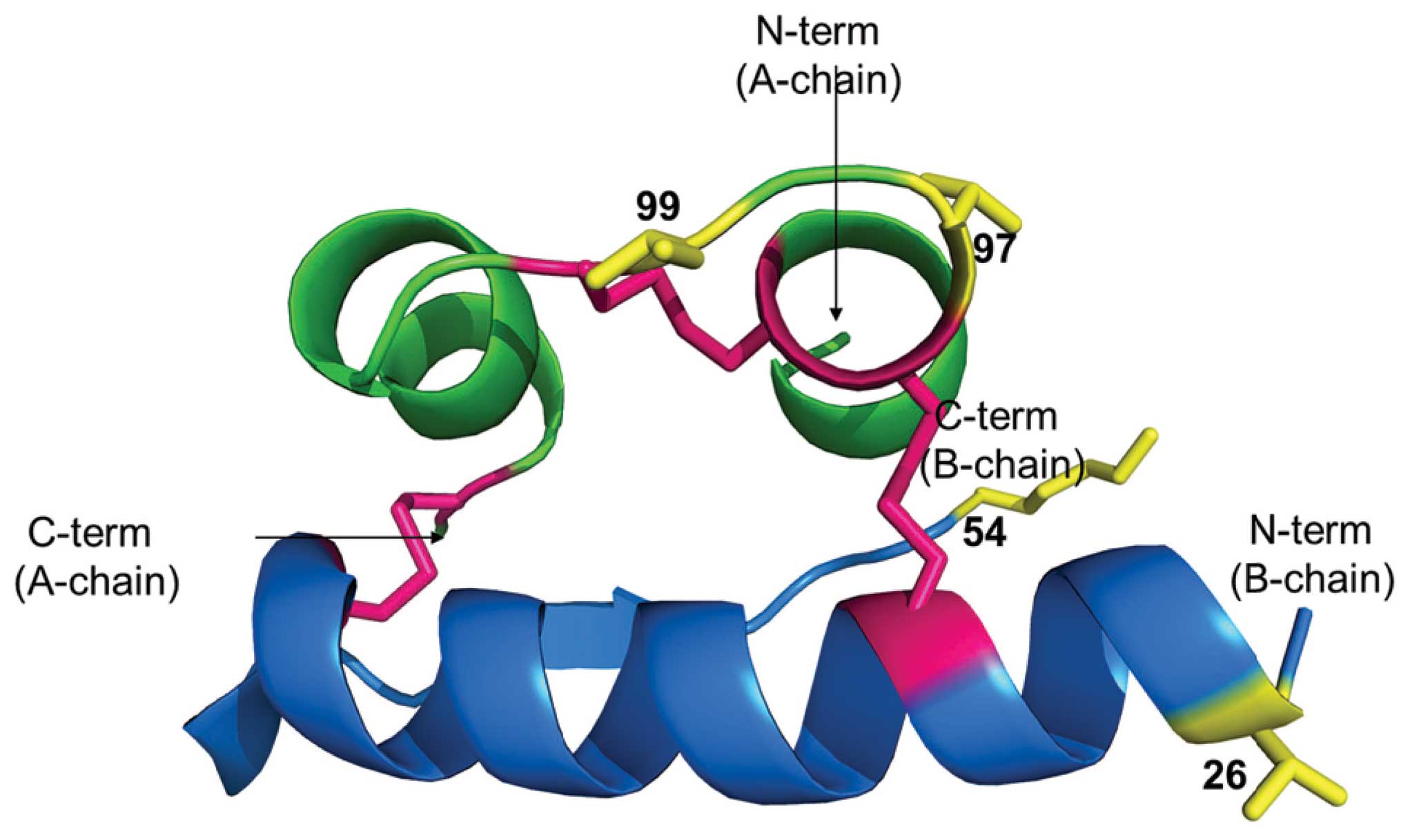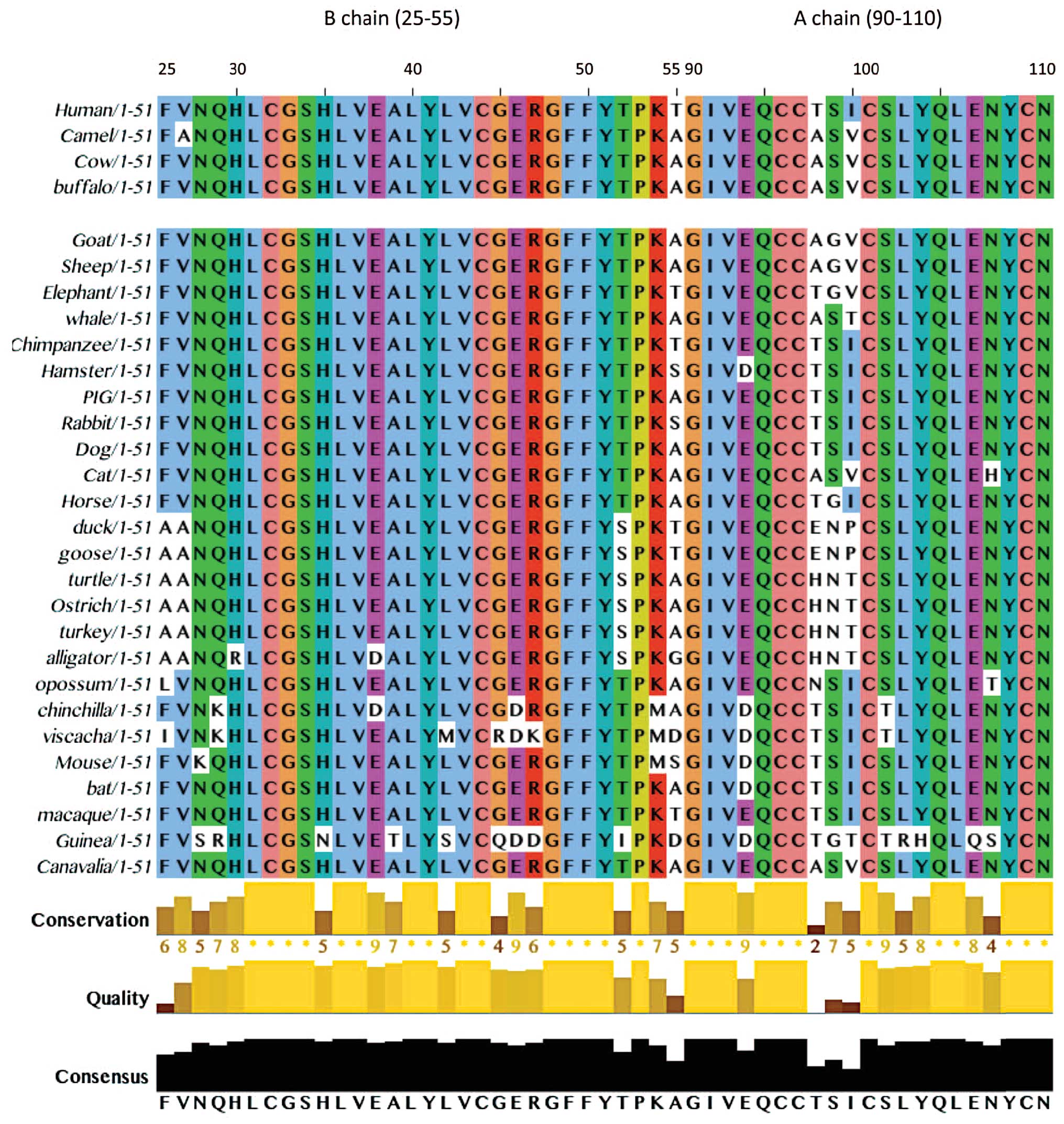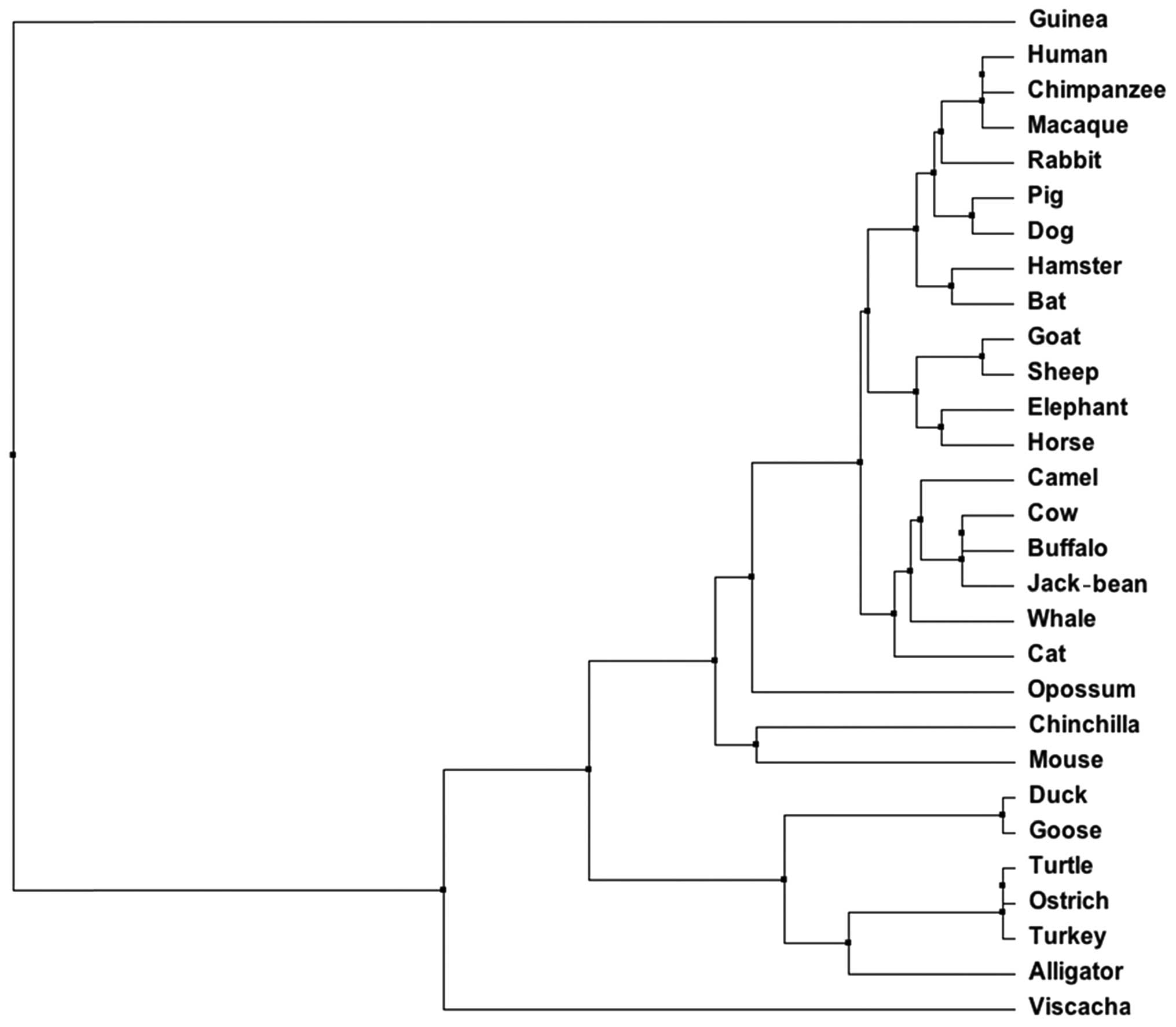|
1.
|
NA Al-BaghliAJ Al-GhamdiKA Al-TurkiAH Al
ElqAG El-ZubaierA BahnassyPrevalence of diabetes mellitus and
impaired fasting glucose levels in the Eastern Province of Saudi
Arabia: results of a screening campaignSingapore Med
J51923930201121221496
|
|
2.
|
KA AlqurashiKS AljabriSA BokhariPrevalence
of diabetes mellitus in a Saudi communityAnn Saudi
Med311923201110.4103/0256-4947.7577321245594
|
|
3.
|
Diabetes - a global
threatLancet3731735200910.1016/S0140-6736(09)60954-5
|
|
4.
|
E GinterV SimkoDiabetes type 2 pandemic in
21st centuryBratisl Lek Listy111134137201020437822
|
|
5.
|
C SetacciG de DonatoF SetacciE
ChisciDiabetic patients: epidemiology and global impactJ Cardiovasc
Surg50263273200919543188
|
|
6.
|
RP AgrawalR DograN MohtaR TiwariS SinghalS
SultaniaBeneficial effect of camel milk in diabetic nephropathyActa
Biomed80131134200919848050
|
|
7.
|
RP AgrawalS JainS ShahA ChopraV
AgarwalEffect of camel milk on glycemic control and insulin
requirement in patients with type 1 diabetes: 2-years randomized
controlled trialEur J Clin Nutr6510481052201121629270
|
|
8.
|
RH MohamadZK ZekryHA Al-MehdarCamel milk
as an adjuvant therapy for the treatment of type 1 diabetes:
verification of a traditional ethnomedical practiceJ Med
Food12461465200910.1089/jmf.2008.000919459752
|
|
9.
|
RP AgrawalR BeniwalDK KocharCamel milk as
an adjunct to insulin therapy improves long-term glycemic control
and reduction in doses of insulin in patients with type-1 diabetes
A 1 year randomized controlled trialDiabetes Res Clin
Pract681761772005
|
|
10.
|
A SbouiT KhorchaniM DjeghamA AgrebiH
ElhatmiO BelhadjAnti-diabetic effect of camel milk in
alloxan-induced diabetic dogs: a dose-response experimentJ Anim
Physiol Anim Nutr94540546201019906135
|
|
11.
|
OU BegH von Bahr-LindstromZH ZaidiH
JornvallA camel milk whey protein rich in half-cystine. Primary
structure, assessment of variations, internal repeat patterns, and
relationships with neurophysin and other active polypeptidesEur J
Biochem159195201198610.1111/j.1432-1033.1986.tb09852.x
|
|
12.
|
O ZagòrskiA MamanA YafeeA MeislesC van
CreveldR YagilInsulin in milk - a comparative studyInt J Anim
Sci1324124419983530717
|
|
13.
|
Food and Agriculture Organization of the
United NationsCamel milk and cheese makingThe Technology of Making
Cheese from Camel Milk (Camelus dromedarius)FAO Animal
Production and Health Paper 113Rome2011
|
|
14.
|
A RoyA KucukuralY ZhangI-TASSER: a unified
platform for automated protein structure and function predictionNat
Protoc5725738201010.1038/nprot.2010.520360767
|
|
15.
|
Y ZhangTemplate-based modeling and free
modeling by I-TASSER in CASP7Proteins69Suppl
8108117200710.1002/prot.2170217894355
|
|
16.
|
GI BellMM StempienNM FongLB RallSequences
of liver cDNAs encoding two different mouse insulin-like growth
factor I precursorsNucleic Acids
Res1478737882198610.1093/nar/14.20.78733774549
|
|
17.
|
I ShikataY MaeharaT FujiyoshiH
EndoIsolation and characterization of a conserved sequence highly
expressed in tumors and growing
cellsOncology44192198198710.1159/0002264752439968
|
|
18.
|
CR SnellDG SmythProinsulin: a proposed
three-dimensional structureJ Biol Chem250629162951975808541
|
|
19.
|
WO DanhoThe isolation and characterization
of insulin of camel (Camelus dromedarius)J Fac Med
Baghdad1416281972
|
|
20.
|
AM Al-SwailemMB Al-FageehEJ AlyamaniMM
ShehataTA Al-ShammariCharacterization of recombinant Arabian camel
(Camelus dromedarius) insulinAfr J
Biotechnol7338933942008
|
|
21.
|
RA PullenDG LindsaySP WoodReceptor-binding
region of insulinNature259369373197610.1038/259369a0175286
|
|
22.
|
P De MeytsE Van ObberghenJ RothMapping of
the residues responsible for the negative cooperativity of the
receptor-binding region of insulinNature2735045091978661960
|
|
23.
|
J XuV ChangSB JosephPeroxisomal
proliferator-activated receptor alpha deficiency diminishes
insulin-responsiveness of gluconeogenic/glycolytic/pentose gene
expression and substrate cycle
fluxEndocrinology14510871095200410.1210/en.2003-1173
|
|
24.
|
S ShoelsonM FickovaM HanedaIdentification
of a mutant human insulin predicted to contain a
serine-for-phenylalanine substitutionProc Natl Acad Sci
USA8073907394198310.1073/pnas.80.24.73906424111
|
|
25.
|
DF SteinerHS TagerSJ ChanK NanjoT SankeAH
RubensteinLessons learned from molecular biology of insulin-gene
mutationsDiabetes
Care13600609199010.2337/diacare.13.6.6002192846
|
|
26.
|
L SchafferA model for insulin binding to
the insulin receptorEur J
Biochem22111271132199410.1111/j.1432-1033.1994.tb18833.x8181471
|
|
27.
|
CC YipP OttensmeyerThree-dimensional
structural interactions of insulin and its receptorJ Biol
Chem2782732927332200310.1074/jbc.R30002120012764141
|
|
28.
|
AM JorgensenHB OlsenP BalschmidtJJ
LedSolution structure of the superactive monomeric des-[Phe(B25)]
human insulin mutant: elucidation of the structural basis for the
monomerization of des-[Phe(B25)] insulin and the dimerization of
native insulinJ Mol Biol25768469919968648633
|
|
29.
|
C KristensenT KjeldsenFC WibergAlanine
scanning mutagenesis of insulinJ Biol
Chem2721297812983199710.1074/jbc.272.20.129789148904
|
|
30.
|
E MedhammarR Wijesinha-BettoniB StadlmayrE
NilssonUR CharrondiereB BurlingameComposition of milk from minor
dairy animals and buffalo breeds: a biodiversity perspectiveJ Sci
Food AgricNov142011(Epub ahead of print)
|
|
31.
|
VN MichelizziMV DodsonZ PanWater buffalo
genome science comes of ageInt J Biol
Sci6333349201010.7150/ijbs.6.33320582226
|
|
32.
|
GP PizzutiGC SalvatoriSome blood
parameters of water buffalo in different physiological
conditionsBoll Soc Ital Biol Sper6964965419938198807
|
|
33.
|
J ScherContribution à l’étude de
l’influence de la composition des micelles sur la coagulation
enzymatique Inst. National Polytech., Vandéuvre-lès-Nancy, 1988 (In
French)
|
|
34.
|
T BekeleN LundeheimK DahlbornMilk
production and feeding behavior in the camel (Camelus
dromedarius) during 4 watering regimensJ Dairy
Sci9413101317201110.3168/jds.2010-365421338796
|
|
35.
|
N Nafissi-VarchehM ErfanR AboofazeliAn
approach to the design of a particulate system for oral protein
delivery. I In vitro stability of various poly (alpha-hydroxy
acids)-microspheres in simulated gastrointestinal fluidsJ
Microencapsul25584592200810.1080/02652040802485485
|
|
36.
|
C PregoM GarciaD TorresMJ
AlonsoTransmucosal macromolecular drug deliveryJ Control
Release101151162200510.1016/j.jconrel.2004.07.03015588901
|
|
37.
|
A VilaA SanchezM TobioP CalvoMJ
AlonsoDesign of biodegradable particles for protein deliveryJ
Control Release781524200210.1016/S0168-3659(01)00486-211772445
|
|
38.
|
K HeCB ChanX LiuIdentification of a
molecular activator for insulin receptor with potent anti-diabetic
effectsJ Biol
Chem2863737937388201110.1074/jbc.M111.24738721908618
|
|
39.
|
D MozaffarianH CaoIB KingTrans-palmitoleic
acid, metabolic risk factors, and new-onset diabetes in U.S.
adults: a cohort studyAnn Intern
Med153790799201010.7326/0003-4819-153-12-201012210-0000521173413
|
|
40.
|
KR AbeywickramaWD RatnasooriyaAM
AmarakoonOral hypoglycaemic, antihyperglycaemic and antidiabetic
activities of Sri Lankan Broken Orange Pekoe Fannings (BOPF) grade
black tea (Camellia sinensis L.) in ratsJ
Ethnopharmacol135278286201110.1016/j.jep.2011.02.03521397000
|
|
41.
|
MR ArdalanMK TarzamniMM ShojaBlack tea
improves endothelial function in renal transplant
recipientsTransplant
Proc3911391142200710.1016/j.transproceed.2007.04.01017524915
|
|
42.
|
N BoonHealth potential for functional
green teas?Int J Vitam Nutr
Res78275281200810.1024/0300-9831.78.6.27519685436
|
|
43.
|
CL BroadhurstMM PolanskyRA
AndersonInsulin-like biological activity of culinary and medicinal
plant aqueous extracts in vitroJ Agric Food
Chem48849852200010.1021/jf990451710725162
|
|
44.
|
A BuyukbalciSN ElDetermination of in vitro
antidiabetic effects, antioxidant activities and phenol contents of
some herbal teasPlant Foods Hum
Nutr632733200810.1007/s11130-007-0065-518183488
|
|
45.
|
A CrozierIB JaganathMN CliffordDietary
phenolics: chemistry, bioavailability and effects on healthNat Prod
Rep2610011043200910.1039/b802662a19636448
|
|
46.
|
PL OwenLC MartineauD CavesPS HaddadT
MatainahoT JohnsConsumption of guava (Psidium guajava L) and
noni (Morinda citrifolia L) may protect betel quid-chewing
Papua New Guineans against diabetesAsia Pac J Clin
Nutr176356432008
|
|
47.
|
DG BlackTM TaylorHJ KerrS PadhiTJ
MontvillePM DavidsonDecontamination of fluid milk containing
Bacillus spores using commercial household productsJ Food
Prot71473478200818389688
|
|
48.
|
E SkrodenieneD MarciulionyteZ PadaigaE
JasinskieneV Sadauskaite-KuehneJ LudvigssonEnvironmental risk
factors in prediction of childhood
prediabetesMedicina445663200818277090
|
|
49.
|
HB XuKX HuangYS ZhuHypoglycaemic effect of
a novel insulin buccal formulation on rabbitsPharmacol
Res46459467200210.1016/S104366180200204912419651
|
|
50.
|
GG BriggsPJ AmbroseMP NageotteG
PadillaHigh-dose carisoprodol during pregnancy and lactationAnn
Pharmacother42898901200810.1345/aph.1L04218460586
|
|
51.
|
O CalderonC PadillaC ChavesL VillalobosML
AriasEvaluation of the effect of Lactobacillus rhamnosus probiotic
culture added to yogurt over Staphylococcus aureus,
Escherichia coli O157:H7, Listeria monocytogenes and
Salmonella enteritidis populationsArch Latinoam
Nutr5751552007(In Spanish)
|
|
52.
|
P PadraoN LunetAC SantosH BarrosSmoking,
alcohol, and dietary choices: evidence from the Portuguese National
Health SurveyBMC Public
Health7138200710.1186/1471-2458-7-13817608935
|
|
53.
|
R PadhiFeedback linearization based
computer controlled medication design for automatic treatment of
parturient paresis of cowsComput Methods Programs
Biomed841926200610.1016/j.cmpb.2006.07.009
|
|
54.
|
R LoriniL MinicucciF NapoliScreening for
type 1 diabetes genetic risk in newborns of continental Italy.
Primary prevention (Prevefin Italy) - preliminary dataActa
Biomed76Suppl 33135200516915793
|
|
55.
|
CF GomesEM TrezzaEC MuradeCR
PadovaniSurface electromyography of facial muscles during natural
and artificial feeding of infantsJ
Pediatr82103109200610.2223/JPED.145616614763
|
|
56.
|
A WaldmannJ KurykinU JaakmaThe effects of
ovarian function on estrus synchronization with PGF in dairy
cowsTheriogenology6613641374200610.1016/j.theriogenology.2006.04.03016815540
|














